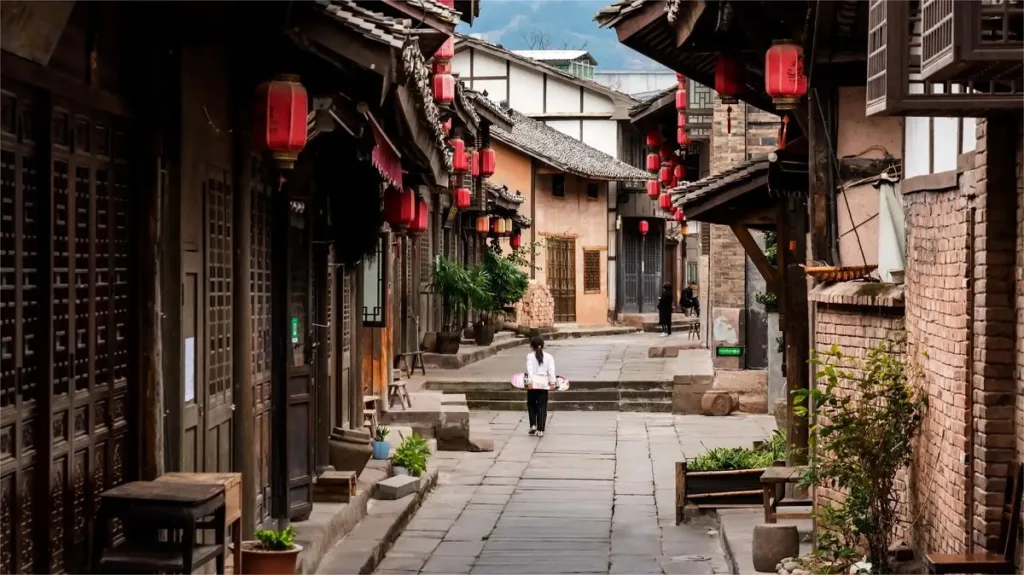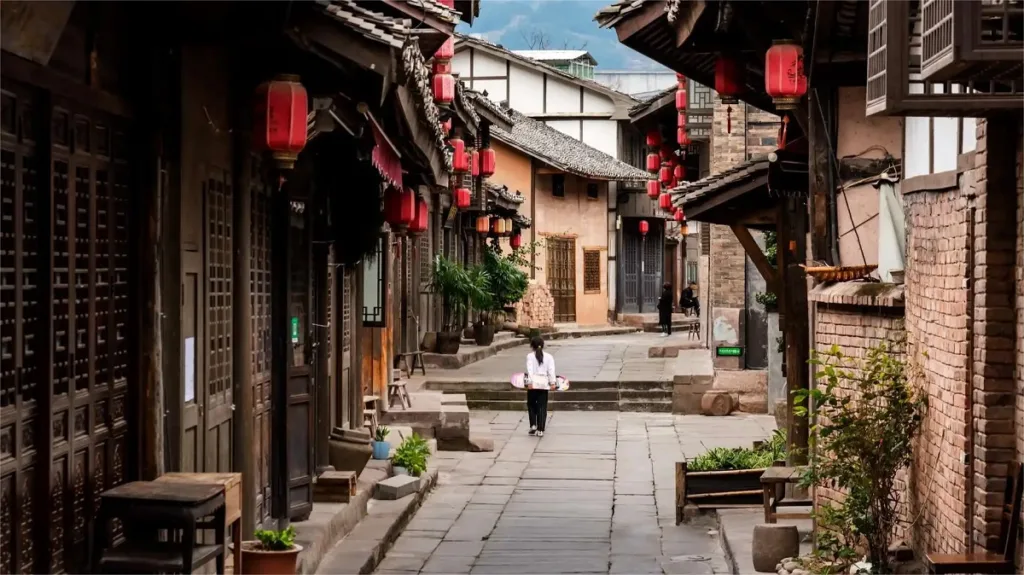Casco Antiguo de Tucheng, Guizhou - Entradas, horarios, localización y puntos de interés


Tucheng Ancient Town (土城古镇), located in Zunyi, Guizhou Province, is a historic town that flourished due to its strategic location for water transportation and gained fame for its association with the Red Army’s crossings of the Chishui River. Its establishment dates back to the sixth year of Emperor Wu of the Han Dynasty (111 BC), making it over 2,100 years old. Tucheng Town has been a pivotal area for military contention throughout history, with military facilities like Jiulong Tuen, Qibao Tuen, Jinzi Tuen, and Tianci Tuen established during the Ming Dynasty.
Nestled amidst mountains and waterways, the town features a charming blend of architecture, with buildings scattered at varying elevations. It has retained its authenticity and tranquility without excessive commercialization, attracting fewer tourists and maintaining its serene ambiance. Visitors can still find old shops like cloth markets and blacksmiths’ workshops, offering glimpses into the town’s historical past. If time allows, exploring the alleys and lanes of this ancient town can provide a leisurely and immersive experience in its rich cultural heritage.
Índice
- Información básica
- Ubicación y transporte
- Highlights of Tucheng Ancient Town
- Vlog about Tucheng Ancient Town
Información básica
| Duración estimada de la visita | 2 horas |
| Precio del billete | 70 RMB |
| Horario de apertura | 24 horas al día |
| Número de teléfono | 0086-0851-22661899 0086-0851-22662266 |
Ubicación y transporte
Tucheng Ancient Town is located in Xishui County, Zunyi, Guizhou Province. Visitors can take a bus from Maocao Pu Bus Station (茅草铺) in Zunyi directly to Tucheng Ancient Town. Alternatively, they can take a bus to Chishui and get off at Xishui, which is approximately a 4-hour drive from Zunyi.
Highlights of Tucheng Ancient Town
Traditional Architectural Culture

Tucheng Ancient Town’s traditional architecture embodies the local materials abundantly available in the area, including bamboo, wood, clay, and stone. Buildings are constructed using these materials based on their suitability, with bamboo used where appropriate, wood where suitable, and so forth. Stone is extensively used for the foundations and walls, while a unique “pierced-dougong wall” construction method employing bamboo and wood is used for the walls. The roofs are covered with small blue tiles, seamlessly integrating the traditional buildings with the natural surroundings.
Merchant Culture

Situated on the ancient salt road along the Chishui River, Tucheng Ancient Town was a vital dock and distribution center for the salt trade, and one of the significant brewing centers in history. Over time, it became a bustling hub where merchants from all corners congregated, fostering a rich merchant culture. Today, the traditional streets retain their historical layout of “front shops and rear houses,” and various historical remnants such as salt shops, boatmen’s associations, wine cellars from the Song Dynasty, ancient post stations, tea lodges, and “Zhang Bandan” residences highlight the town’s vibrant commercial history.
Teahouse Culture

Tucheng Ancient Town has a large population of elderly residents who maintain their traditional habits. In their leisure time, they gather at the teahouses, sipping tea and chatting away, enjoying a peaceful and happy life. The old wooden teahouses, tables, and stools exude a sense of nostalgia, and the aroma of tea blends with the lively conversations of people from all walks of life, creating a charming atmosphere. Tea culture and opera are closely intertwined in Tucheng. During festivals, the elderly perform traditional opera performances, filling the teahouses with melodious tunes. The combination of tea-drinking and opera performances contributes to the harmonious cultural ambiance of the ancient town.
Vlog about Tucheng Ancient Town
Lugares históricos de Guizhou, Atracciones de Zunyi